Nvidia GeForce GTX 1080 Ti
The Nvidia GeForce GTX 1080 Ti was one of the most anticipated graphics cards when it came out in 2017. The 1080 series was Nvidia’s top-end GPU for gamers, and this more recent version outpaced the mighty Titan X in many areas.
The Nvidia GeForce GTX 1080 Ti will set you back $699 (£699, about AU$930) – the same as the pre-discount GTX 1080. This high-end graphics cards brings performance that can match the Titan X Pascal in a lot of cases. Beyond being one of the most impressive cards ever, it’s a showcase of what Nvidia’s Pascal architecture can do. Even in the face of the RTX 2080 and 2080 Ti, it still stands up to the test of time – we just hope the GTX 1080 Ti doesn’t run out of stock before Black Friday and Cyber Monday rolls around.
Since the release of the GTX 1080 Ti we've seen a range of manufacturers produce their own spins on the GPU, so check out our list of the best Nvidia GTX 1080 Ti graphics cards.
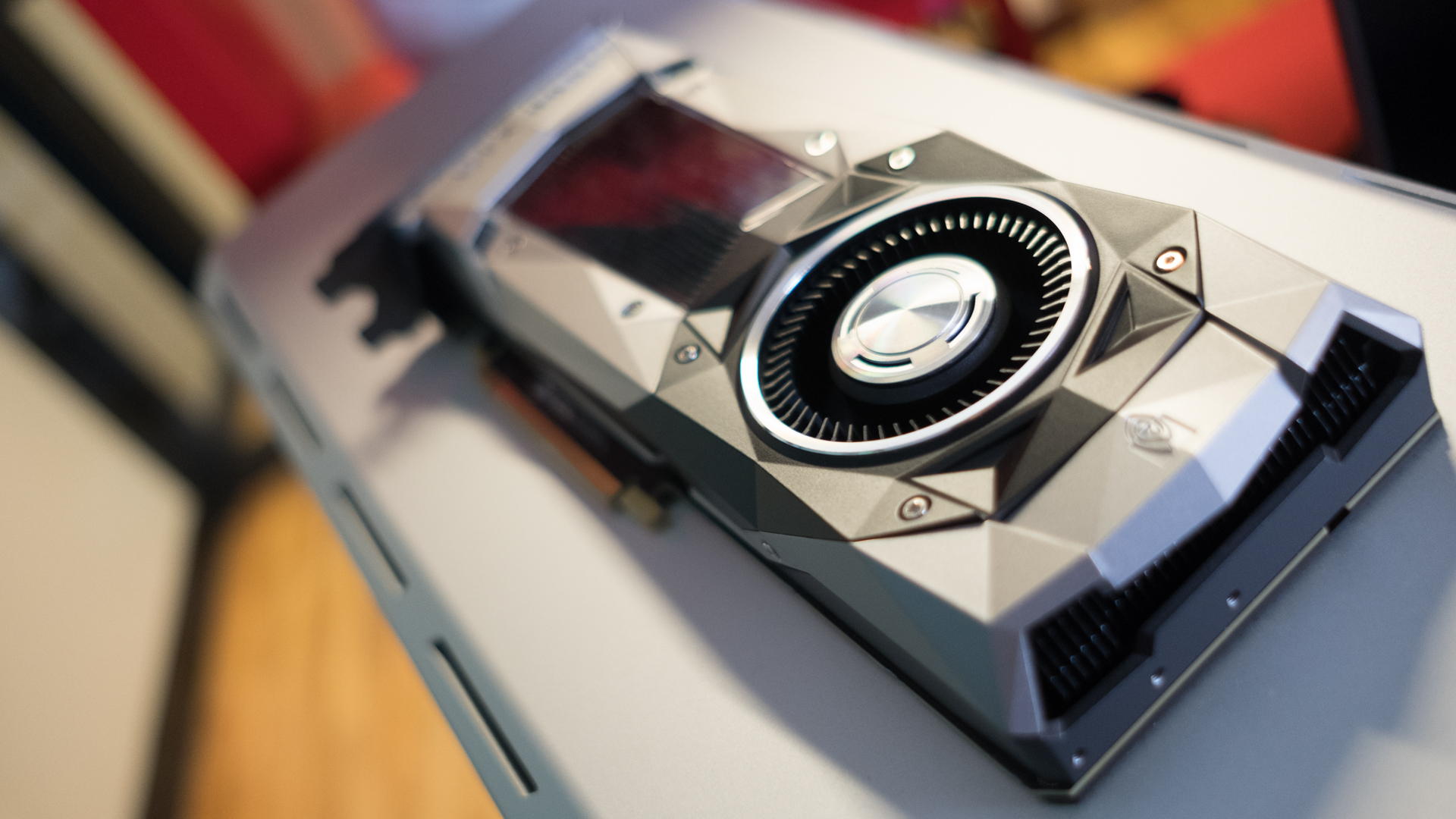
Specifications
The Nvidia GeForce GTX 1080 Ti is packing 3584 CUDA cores, 224 texture units and 88 ROPs. It comes with just a notch less video RAM than the god-like Titan X, but the 1080 Ti’s 11GB complement of GDDR5X VRAM is tuned to a faster 11Gbps – clearly Nvidia is a fan of Spinal Tap – making this Nvidia’s quickest Pascal card.
There’s no question the Nvidia GTX 1080 Ti is a performance beast, running at a base 1480MHz frequency and 1582MHz when boosted.
True, the GTX 1080 boosts to a higher 1,733MHz; however, the Ti model is running with more cores and VRAM, boosting performance in both benchmarks and real-world gaming.
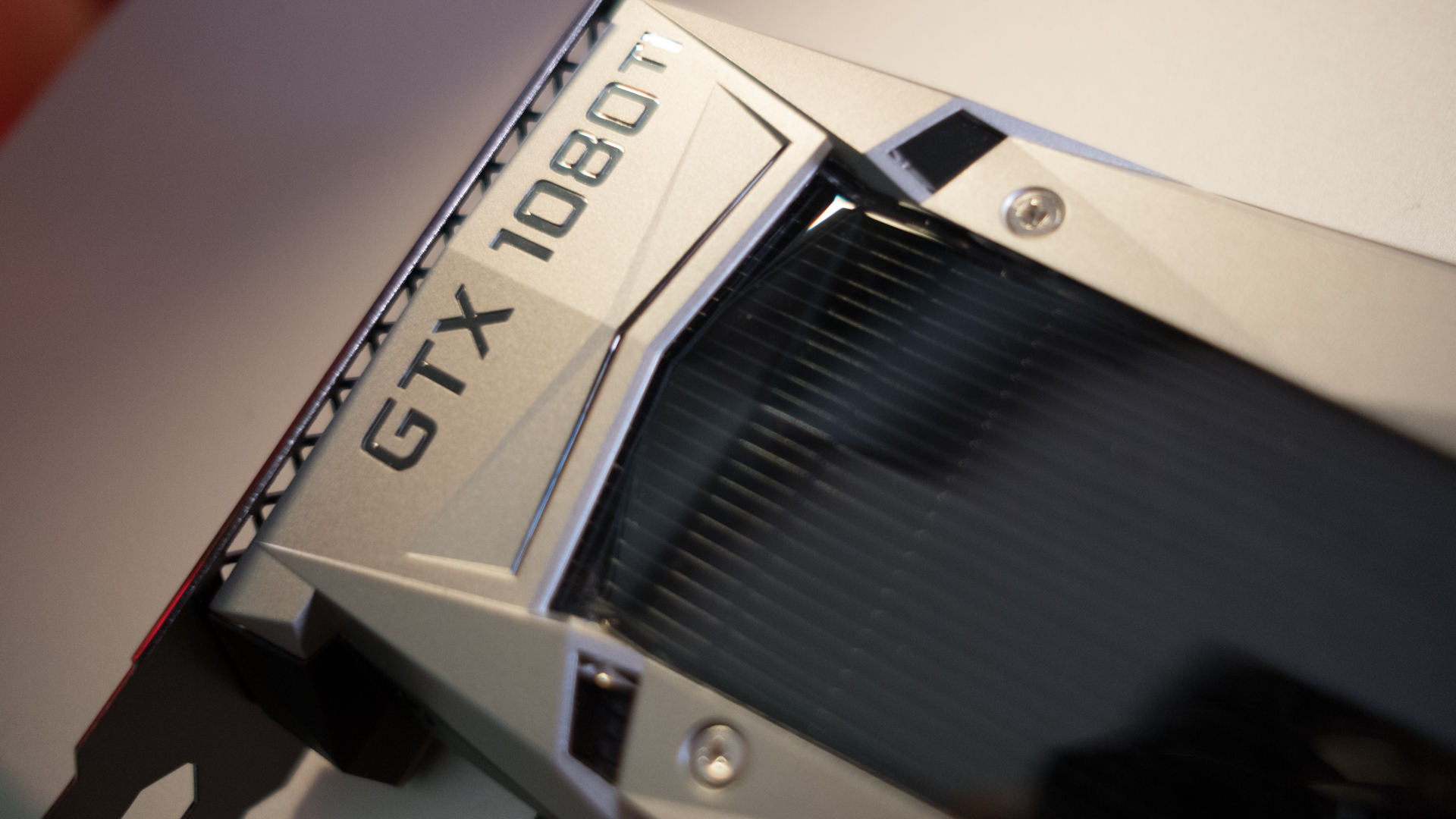
Design and cooling
If you’ve seen one of Nvidia’s self-produced Pascal graphics cards, you’ve seen them all. Externally, the original GeForce GTX 1080 and Nvidia’s latest Ti (or tai as the company pronounces it) card are virtually indistinguishable.
Not that we’re complaining. Nvidia’s design for its Founders Edition cards was a hit when it first debuted and the modern, angular look still appeals. One little change users might notice is the lack of a DVI port; don’t fret though, as the GTX 1080 Ti comes with an adapter you can plug into a DisplayPort.
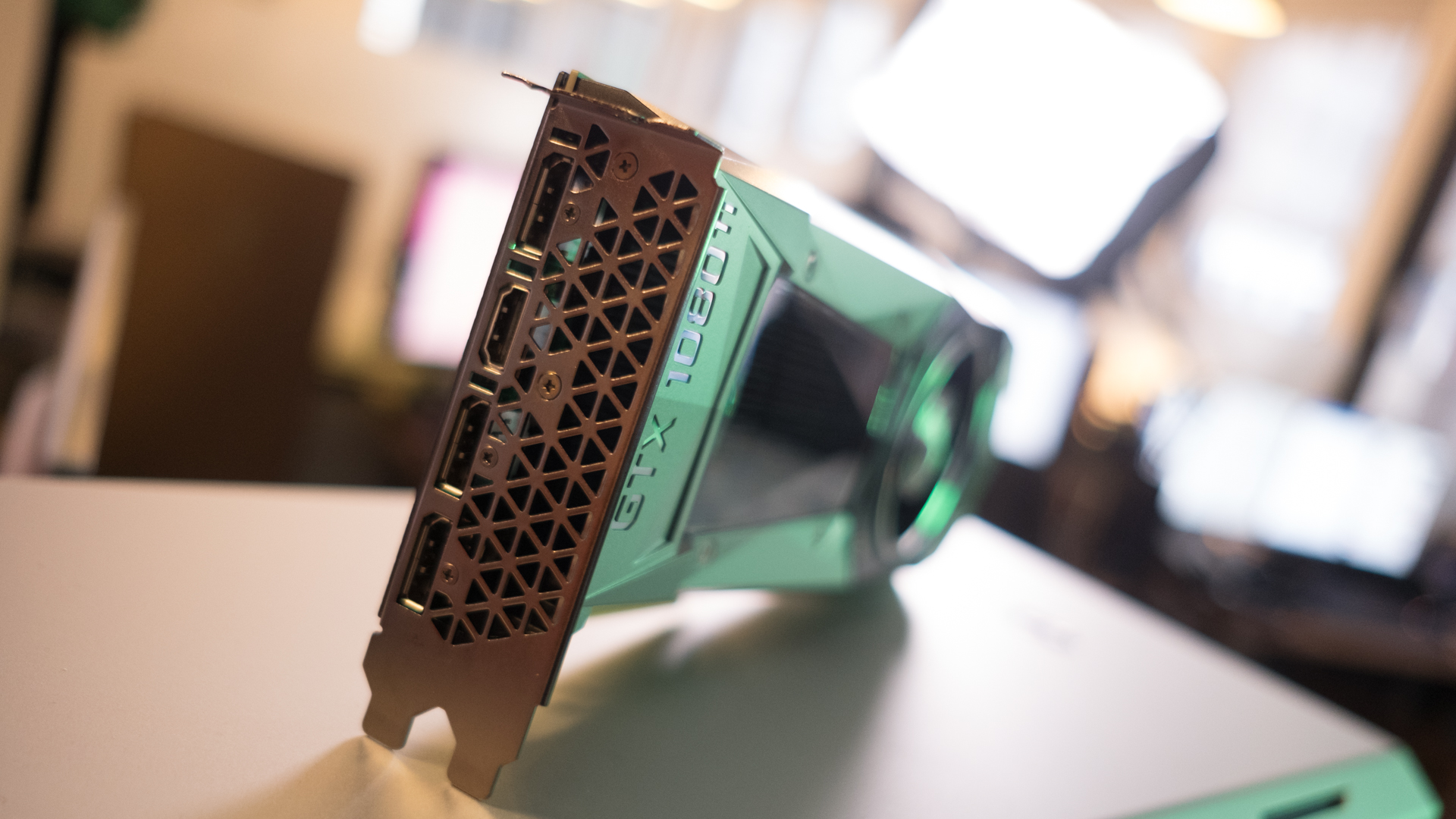
Getting rid of the DVI port has made more room for a better cooling solution. In fact, Nvidia says its new high airflow thermal solution provides twice the airflow area of the GeForce GTX 1080's cooling system.
Our testing corroborates those claims. Even at a full load, the GTX 1080 Ti stayed at a cooler 75 degrees Celsius while the GTX 1080 peaked at 82 degrees Celsius. Of course, you can push both cards to the edge of 91 degrees Celsius by adjusting the power limiter and overclocking the GPUs.
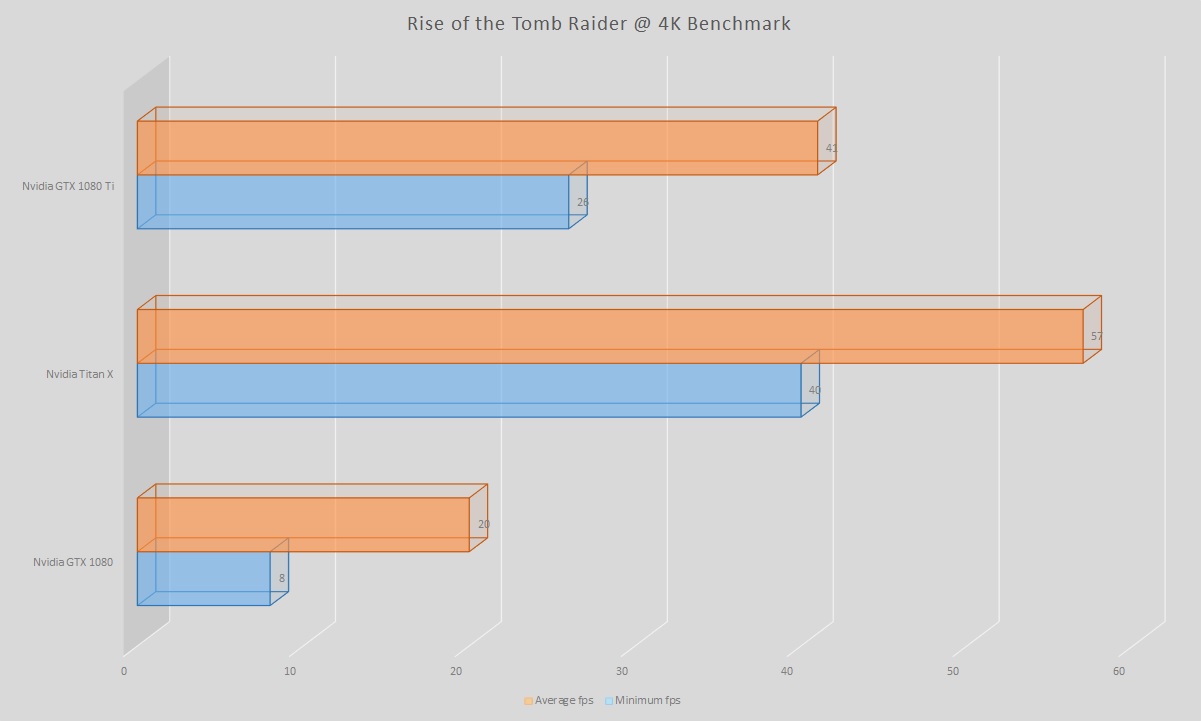
Performance
For years, 4K gaming at 60 fps with a single graphics card has been everything PC gamers could dream of, and the Nvidia GeForce GTX 1080 Ti comes pretty close to delivering that. Getting a silky smooth gaming experience in Ultra HD will depend on what games you’re playing, though.
We saw frame rates in the 50 to 60 range with games like Battlefield 1 and Doom. That’s not an easy feat – but these are still two of the most optimized games around right now.
Likewise, Nvidia released a DirectX 12-optimized Game Ready Driver that helped us run Rise of the Tomb Raider at a solid 40fps, not quite matching the Titan X’s 57fps performance and double the 20fps previously seen on the GTX 1080.
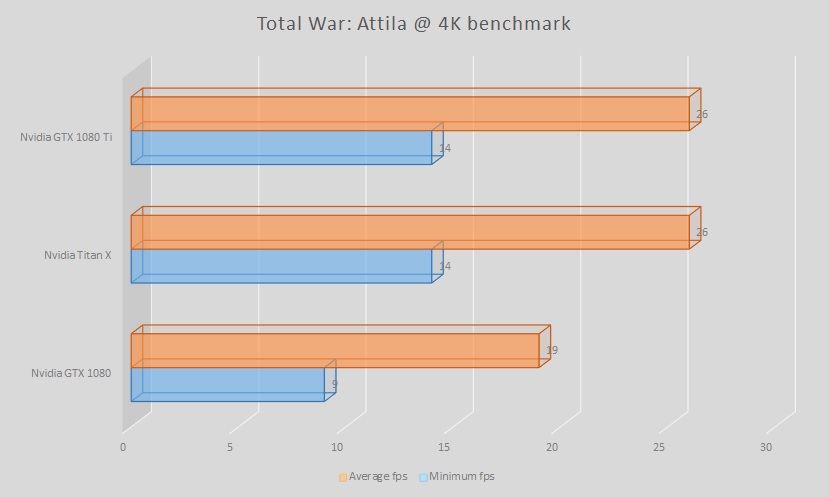
Those are best-case scenarios, and you shouldn’t think the Nvidia GTX 1080 Ti is a bulletproof solution for 4K gaming. Total War: Attila for one thing brought the Titanium-power GPU to its knees as it struggled to render the game at a just-playable 26fps.
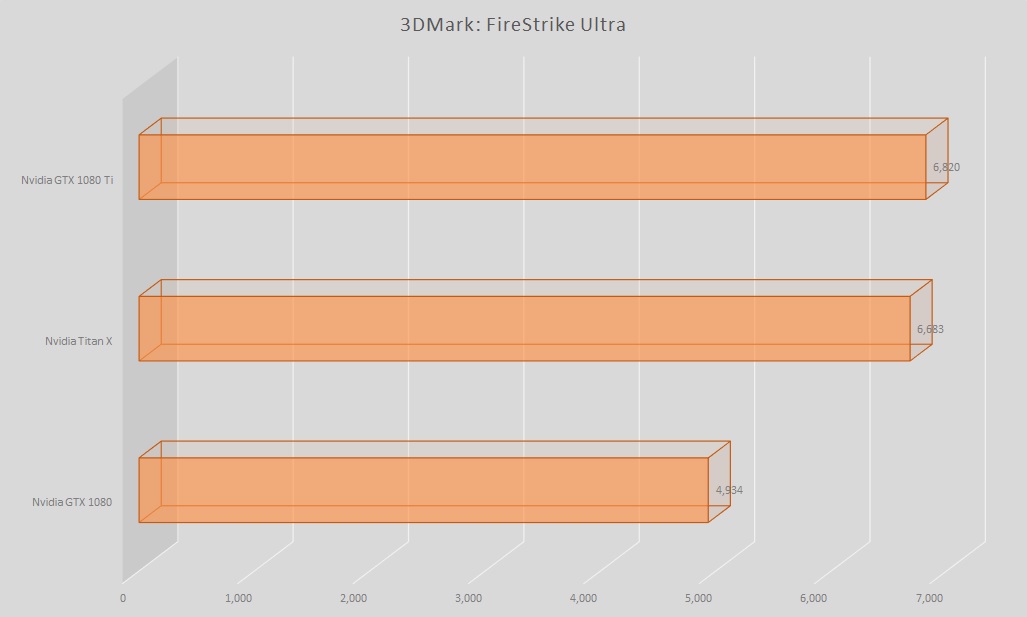
Getting to the pure-performance testing 3DMark: FireStrike Ultra benchmark, the GTX 1080 Ti completely demolishes its forebears by a difference of 2,000 to 4,000 points across the board. More impressively, this ultimate GeForce skips ahead of the Titan X too.
The most mind-blowing bit is that the Nvidia GTX 1080 Ti is doing all of this without any overclocking. Nvidia claims the card can be pushed as far as 2GHz, and while we haven’t quite pushed it that far yet we have been able to achieve a stably running system at 1.7-1.8GHz range.
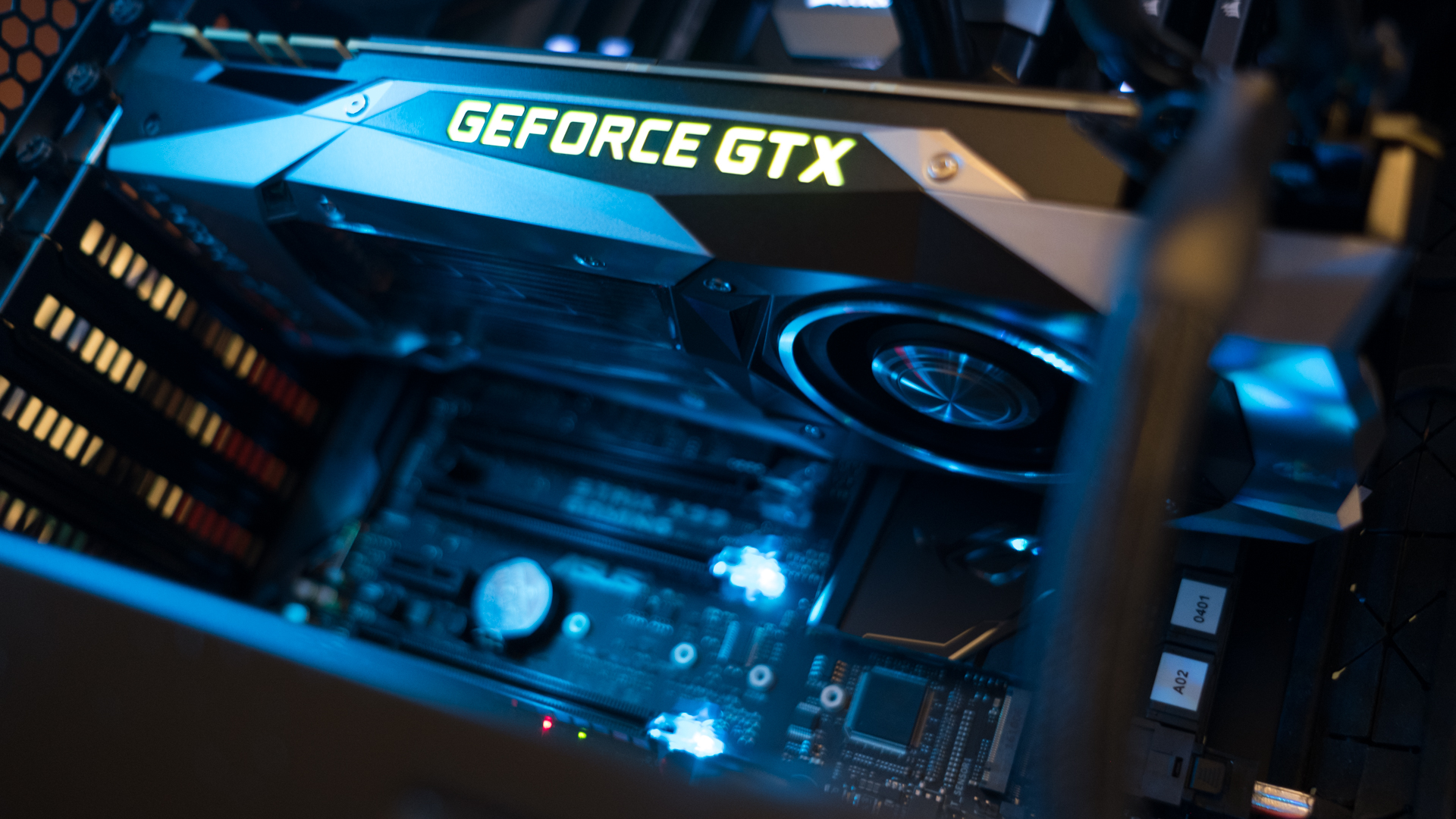
Final verdict
The Nvidia GeForce GTX 1080 Ti is one of the most impressive graphics cards of all time. It’s remarkably more powerful than the original GTX 1080 and matches the Titan X’s gaming performance. You’re also looking at one of Nvidia’s coolest-running cards with more than enough overclocking headroom.
If you’ve been pining for Nvidia’s top GPU, but couldn’t stomach the $1,200 (£1,099, AU$1,599), the Nvidia GTX 1080 Ti looks much more appetizing at $699 or £699 (about AU$930).
0 comments:
Post a Comment